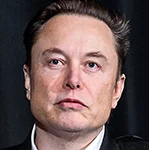 Matt Kucharski |
As a firm that helps organizations build, grow and protect their brands and reputations, it’s common for clients to ask us to help establish them as thought leaders. After all, what company doesn’t want to be the go-to expert in their respective space?
But logic suggests that not everyone can be a thought leader and not every thought leader is the same. Part of determining thought-leadership strategy means looking in the mirror and asking whether you have the discipline, the courage and the vision to make it happen.
Thought leader profiles
If Yogi Berra were still alive, he’d say the best thought leaders are ones with compelling thoughts and strong leadership. Simple, right?
Nope.
|
|
First, an organization must come to grips with what kind of thought leader it can be. At Padilla, we generally see three types:
The sage: this is the company with a long history who has seen it all and can put industry change into context. Successful “sage” thought leaders have the courage to question their own status quo, because if they don’t, someone else will. Microsoft would fall into this camp as it helps move people from desktop to cloud. Lots of companies came before it, but when Microsoft—the undisputed leader in desktop computing—talked about the value of the cloud, people started adopting en masse.
The disruptor: the new upstart that’s challenging the way things are being done today. The truly credible ones do so while at the same time backing up their words with specific actions demonstrating their ability to deliver. That’s the “leadership” part of thought leadership. We normally think of Tesla in this vein, though time will tell whether the company can deliver on its promise of a mass-produced, affordable electric car.
The convener: this is the organization that steps forward and brings disparate groups together to solve a common problem. Conveners must set aside their egos and put the cause before their own visibility—otherwise, others won’t want to take up their mantle. An example here might be United Way, which serves to help convene organizations around solving hunger, poverty and other pressing social issues. But it also could be Apple (normally thought of as a “disruptor”), who is largely credited with helping solve the issue of digital rights management for the music and entertainment industry.
Having (and sharing) an opinion matters
Knowing what kind of thought leader you want to be is a start, but then you need the courage to express a strong point of view. Thought leaders have a vision that’s different than their peers, and they’re willing to express that vision even if it makes others (including their own customers and employees) uncomfortable. True thought leaders step outside of their industry norms to share their point of view on where the world, or the industry, or the category, or the consumer (you get the gist) is headed.
Can the market leader also be the thought leader? After all, thought leaders question the status quo, and market leaders are the status quo. They can, but it requires a willingness to question and strategically disrupt their own status quo. Thought leadership, at its core, is about change and transformation, and that doesn’t happen without a strong vision—and most importantly, sharing that vision beyond the walls of your organization. And it means establishing a content and connectivity strategy that builds and grows your reputation as a true thought leader. No organization ever became a thought leader by keeping opinions to themselves.
Own it and act on it
Finally, you need to make a long-term commitment, acting in a manner that supports your thought-leadership platform. Thought leaders without actions are industry pretenders. Market leaders questioning their own status quo must take action to support their long-term vision, and disruptors need to show that they can consistently perform.
The truly remarkable companies convince stakeholders to believe in their view of where the world is going and their ability to deliver on that vision. That is thought leadership, and it’s a true competitive advantage for today’s best organizations.
***
Matt Kucharski is President of Padilla.



 The NBA, which promotes legalized gambling 24/7, seems more than hypocritical for banning player for placing bets... Diocese of Brooklyn promises to issue press release the next time one of its priests is charged with sexual abuse... Truth Social aspires to be one of Donald Trump's iconic American brands, just like Trump University or Trump Steaks or Trump Ice Cubes.
The NBA, which promotes legalized gambling 24/7, seems more than hypocritical for banning player for placing bets... Diocese of Brooklyn promises to issue press release the next time one of its priests is charged with sexual abuse... Truth Social aspires to be one of Donald Trump's iconic American brands, just like Trump University or Trump Steaks or Trump Ice Cubes. Publicis Groupe CEO Arthur Sadoun puts competition on notice... Macy's throws in the towel as it appoints two directors nominated by its unwanted suitor... The Profile in Wimpery Award goes to the Ford Presidential Foundation for stiffing American hero and former Wyoming Congresswoman Liz Cheney.
Publicis Groupe CEO Arthur Sadoun puts competition on notice... Macy's throws in the towel as it appoints two directors nominated by its unwanted suitor... The Profile in Wimpery Award goes to the Ford Presidential Foundation for stiffing American hero and former Wyoming Congresswoman Liz Cheney. JPMorgan Chase chief Jamie Dimon's "letter to shareholders" is a must-read for PR people and others interested in fixing America and living up to its potential... Get ready for the PPE shortage when the next pandemic hits... Nixing Netanyahu. Gaza carnage turns US opinion against Israel's prime minister.
JPMorgan Chase chief Jamie Dimon's "letter to shareholders" is a must-read for PR people and others interested in fixing America and living up to its potential... Get ready for the PPE shortage when the next pandemic hits... Nixing Netanyahu. Gaza carnage turns US opinion against Israel's prime minister. Trump Media & Technology Group sees Elon Musk's X as an option for those who want the free expression promised by Truth Social but without Donald Trump, owner of 57.3 percent of TMTG... Chalk one up for "anti-woke warrior" governor Greg Abbott as University of Texas lays off 60 DEI-related staffers... Five percent of Americans see the US as its own worst enemy, according to Gallup.
Trump Media & Technology Group sees Elon Musk's X as an option for those who want the free expression promised by Truth Social but without Donald Trump, owner of 57.3 percent of TMTG... Chalk one up for "anti-woke warrior" governor Greg Abbott as University of Texas lays off 60 DEI-related staffers... Five percent of Americans see the US as its own worst enemy, according to Gallup. Nine of the Top 100 firms that participated in O'Dwyer's rankings last year apparently threw in the towel for the 2024 scorecard. Seven other firms also went AWOL.
Nine of the Top 100 firms that participated in O'Dwyer's rankings last year apparently threw in the towel for the 2024 scorecard. Seven other firms also went AWOL.


 Have a comment? Send it to
Have a comment? Send it to 
No comments have been submitted for this story yet.